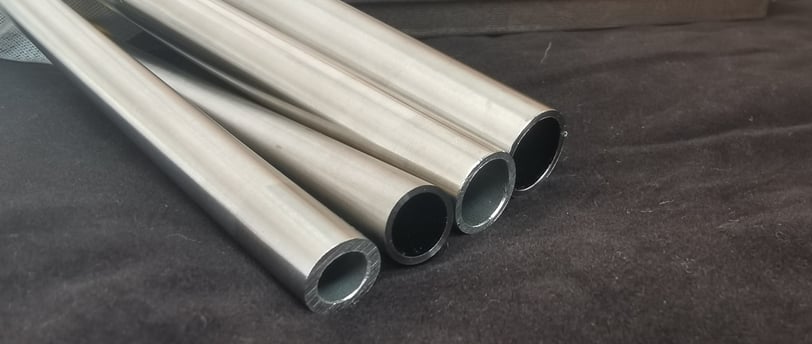Biopharmaceutical Tubing Selection Guide: Choosing the Right Materials
This Biopharmaceutical tubing selection guide helps you choose the best materials for purity, durability, and compliance, ensuring efficient and safe production in pharmaceutical environments.
SHEENTUBE
11/8/20242 min read


How to Choose the Right Tubing for Biopharmaceutical Applications
Introduction
Selecting the right tubing for biopharmaceutical applications is essential to ensure product purity, regulatory compliance, and process efficiency. Biopharmaceutical manufacturing requires tubing that can withstand rigorous cleaning processes, prevent contamination, and support high-quality production. In this article, we’ll explore the factors to consider when choosing tubing for biopharmaceutical environments.
1. Material Selection: Prioritizing Purity and Resistance
The choice of tubing material is critical in biopharmaceutical applications, where purity and resistance to chemicals are top priorities. 316L stainless steel and high-purity PTFE (polytetrafluoroethylene) are widely recommended for their corrosion resistance and chemical stability. These materials help maintain a sterile environment and prevent unwanted reactions with biopharmaceutical substances, ensuring product integrity throughout production.
2. Importance of Surface Finish
For applications that require strict cleanliness, an electropolished surface finish is highly beneficial. Electropolished tubing has a smooth, mirror-like surface that minimizes biofilm formation, microbial growth, and particle adherence. This surface finish reduces the frequency of cleaning, making it easier to maintain sterile conditions. Electropolished stainless steel is especially popular in biopharmaceutical settings where purity is paramount.
3. Tubing Durability and Flexibility
Biopharmaceutical applications often involve high temperatures, pressure variations, and exposure to strong chemicals, all of which require durable and flexible tubing. Selecting tubing that can withstand these factors without compromising integrity is essential. Silicone tubing and certain grades of stainless steel are excellent choices for their ability to handle dynamic conditions while maintaining structural stability.
4. Compliance with Regulatory Standards
Biopharmaceutical production is governed by strict regulatory standards, such as FDA, USP Class VI, and ASME BPE certifications. These standards ensure that tubing materials are biocompatible, non-reactive, and safe for pharmaceutical applications. Choosing tubing that meets these certifications simplifies compliance, supports quality assurance, and ensures the tubing is suitable for contact with sensitive products.
5. Considerations for Cleaning and Maintenance
Ease of cleaning and maintenance is another crucial factor. Tubing that can be easily sanitized, withstands aggressive cleaning agents, and minimizes the risk of contamination helps maintain efficient operations. High-quality stainless steel and chemically inert materials like PTFE require less frequent maintenance, reducing downtime and improving productivity.
Conclusion
Choosing the right tubing for biopharmaceutical applications requires careful consideration of material, surface finish, durability, regulatory compliance, and maintenance. High-quality tubing supports product purity, regulatory compliance, and efficiency in manufacturing. By selecting tubing designed for biopharmaceutical environments, companies can enhance process reliability, product safety, and operational success.

Sheentube
High-quality stainless steel tubes for industries.
+86 15203012590
© 2024. All rights reserved.
